Convair B-36 long-range US strategic bomber (part of 1)
A modern reader, accustomed to the fact that nowadays many airplanes have been in use for decades, can call B-36 a loser. But by the standards of piston aviation, the service life of which was significantly less than the current, the fate of this car was quite prosperous. Evidence of this is a rare in peacetime increase in production during construction. Initially it was supposed to produce only 100 aircraft, but eventually the assembly line closed after rolling out the 383 machine. Although, for the sake of truth, we note that the increase in the series was primarily due to the tense political situation in the post-war world and the lack of an alternative to the B-36 aircraft. The technical problems with B-36, as we shall see, are enough. At the same time, the B-36 look is distinguished by the harmonious proportions, the classic cleanliness of the lines, and the aircraft is considered to be an outstanding example of not only engineering, but also technical aesthetics.
The start of work on B-36 marked the largest turn in US foreign policy. Isolationism that prevailed in the 1930s suggested that the interests of the United States lie mainly within the Western Hemisphere, and that the ocean spaces reliably protect America from possible aggression. The outbreak of the Second World War in Europe, the catastrophic fall of France and the most difficult martial law of England forced us to reconsider this position. 30 December 1940 Mr. F. Roosevelt, who had just been elected president of the United States for a third term, said in a radio address to his compatriots:
The work on the ultra-long bomber supplemented 1940, developed in June-September, the largest weapons production program and the Boeing B-1940 “Super-strength”, which began in August 29, which was more than twice as heavy as the latest American heavy bomber. Boeing B-17 “Flying Fortress” “bomber”, but in turn almost three times inferior to future B-36. The initial impulse to create a new Mattina was a desire to hedge against the defeat of England and the loss of home base in Europe. Formation in PTTT A in the course of the Second World War, claims for global leadership supported the B-36 aircraft program even after the threat of Germany’s invasion of British territory disappeared. As a result, B-36 became the first strategic symbol of the United States as a great world power and military leader of the West. However, he was converted - paradox stories - against a recent ally in the fight against fascist Germany.
The initial requirements of the Air Force, issued in April 1941, envisaged the creation of a bomber with a maximum speed of 724 km / h at an altitude of 7620 m, a cruising speed of 443 km / h, a practical ceiling of 13700 m and an 19310 m range at an altitude of 7620 m. Thus, It was supposed to make a “big jump” compared to B-17, which had a maximum speed of 17 km / h in X-NUMX (1941), a practical 510 m ceiling, a maximum 10700 km flight range and a bomb load of 5300 t. and from B-1,8, calculated at a speed of 29 km / h, a range of 590 km and a maximum load of more than 9800 tons. However, after four months, after consulting with firms Convey and Boeing, as well as Northrop and Douglas, who joined the competition program, the Air Force was forced to admit the unreality of such an overestimated technical project and in August of the same year, the required maximum range to 7 km with a bomb load of 16100 t was lowered (with a combat range of 4,5 km with the same load), and the practical ceiling to 6440 m while maintaining a cruising speed in the 12200 range… 390 km / h.
The further deterioration of the military situation in the world (Hitler’s attack on the Soviet Union, the bitter “Battle of the Atlantic”), which prompted the program to accelerate, pushed the review of American demands. Despite the concessions made by the military, the new task was still a daunting task, which, after two more months (in October 1941), was entrusted to the firms Conwer and Northrop, in November 1941 received contracts for the development and construction of two experienced bomber: respectively XB-36 and XB-35.
The project of the Northrop company provided for the use of a radically new “flying wing” scheme, the founder of which was in favor of the founder D. Northrop in the middle of the 1920-s. As a result, a piston B-35 appeared, which made the first flight of 25 on June 1946. Based on it, a jet B-49 was created, which rose for the first time in the 21 air on October 1947. However, the USAF rejected these machines, they were not brought to the series. let's go Only two experienced XB-35 and 11 pre-production YB-35, two pre-production bomber YB-49 and one reconnaissance YRB-49 were built. The “flying wing” scheme was revived in the USA only through 40 years with the creation of the Northrop B-2 aircraft.
In contrast, the bomber Convair B-36, made according to the normal aerodynamic design, contained a much lower technical risk. Therefore, his program was considered a higher priority and ultimately led to success.
Konver, formed in 1923, took up bomber aviation only in the second half of 1930, but its debut was the biggest success, because the well-known B-24 “Liberator” (1939) was built over a series of more than 19 thousand cars and widely used during the Second World War. In 1942, the heavier D-32 "Dominator" was designed, which was lost in the competition to the B-29 aircraft, but was built in a small series. Previously, the company also developed the PBY "Catalina" (1935) flying boat widely used in the world.
Caused to life by the Second World War, B-36 experienced the vicissitudes of its course. The collapse of the lightning victory plan over the USSR, which put Germany in front of the need for protracted military efforts, weakened the urgency of creating an intercontinental bomber. New impetus was the attack of Japan on Pearl Harbor in December 1941, which turned the United States from a non-military ally into a belligerent. Concerned above all by the desire to achieve a breakthrough in the fight against Japan, the United States, after the battles in the Coral Sea and the Midway Atoll (May-June 1942), made changes in their favor to the balance of maritime forces in the Pacific. However, the Americans sought as soon as possible to transfer the war to the territory of Japan itself, if not by landing, then at least by aerial bombardment to which Germany had already been subjected. The first such attempt, as is known, was made in April 1942 using the North American B-16 "Mitchell" 25 bombers, which took off from the Hornit aircraft carrier and flew Tokyo. But this raid had only psychological significance: B-25, created for ground-based, although they dropped bombs on the target, could not return to the aircraft carrier due to insufficient radius of operation, and almost all aircraft were lost when attempting to land in China. The approach of the aircraft carrier to the Japanese islands at a closer distance was tantamount to suicide.
The eyes of the Americans turned to China, to whom they attached disproportionate importance. According to Churchill, even the top leadership of the United States attributed to China almost the same military power as the British Empire, and the Chinese army equated to the army of Russia. The Americans insisted that operations in Burma reopen China’s supply route by land as soon as possible, suggesting the creation of large air bases in China, relying on which American aircraft would dominate the air over Japan and be able to bomb Japan. However, the failure of the British military operations in Burma violated these plans and, considering B-36 the only real means of attacking Japan from long distances, the US government 1943 in July without waiting for the start of flight tests of the bomber and in violation of the usual procedures for purchasing military equipment, issued an order for its mass production. The contract provided for the purchase of 100 serial aircraft with deliveries from August 1945 to October 1946, while the first prototype machine, according to the conditions of 1941, was required to deliver 1944 in May.
In 1944, there was a new twist in the fate of B-36 with a sharp decrease in the priority of its program. As a result of the major successes of Americans in the Pacific Ocean, the Mariana Islands were captured in October, which allowed striking the territory of Japan with the help of medium-sized bombers Boeing B-29 and Convair B-32. At the same time, radical reductions in armed forces and armaments at the end of the Second World War did not affect B-36. The appearance of atomic weapons, which required long-range delivery systems, and the start of new knots of contradictions in the world guaranteed the continuation of the program of the new long-range bomber.
However, the creation of the aircraft, which is so much more existing than the existing machines, faced with great difficulties associated with the development of engines, landing gear and weapons, the choice of structural materials. Already by 1944, it was clear that a serious backlog could not be overcome, and the reduction in priority might have a beneficial effect on the program, allowing to solve the problems without haste. In the future, the lack of qualified labor and strikes at the firm in October 1945 and February 1946 played their role. As a result, the first experimental aircraft XB-36 took off only 8 in August 1946 in August - more than two years later compared with the originally planned date. Tests of the second experimental machine YB-36 began almost a year and a half later - 4 December 1947 g. However, three months before that (28 August 1947 g.), The first production machine B-36A made the first crash.
In the process of designing the B-36, its appearance has undergone a number of major changes. The company initially presented the projects of the aircraft in a four-engine layout (two tandem-mounted engines — with pulling and pushing screws — in each of the two wing nacelles) and six-engined configuration (with pushing screws). Only a week after the conclusion of the contract, preference was given to six engines. During the design process (in October, 1943), the designers abandoned the two-fin vertical tail, previously used on B-24, in favor of the single-fin, which made it possible to reduce the weight of the structure by 1745 kg and reduce the drag of the aircraft. The first experienced HV-36 was distinguished by the contours of the cockpit, inscribed in the contours of the fuselage, but already on the B-36А, the cockpit was made serving to improve the view to the pilots.
Serial production continued on 14 August 1954 and exceeded the originally planned volume in 100 machines. Total built 383 aircraft B-36. In addition to the two experimental machines (HV-36 and YB-36), the following bomber (B-36) and reconnaissance (RB-36) variants were made:
B-36A (built by 22 aircraft),
B-36B (built 73 aircraft, first flight 8 July 1948 g.),
B-36D (22 aircraft, 26 March 1949 g.),
RB-36D (17, 18 December 1949 g.),
B-36F (34, November 1950 g.),
RB-36F (24, 1951),
B-36H (83, December 1951),
RB-36H (73),
B-36J (33, September 1953).
The experienced YB-36 was later modified to the YB-36A variant, and then to the RB-36E. All В-36А except for the first machine loaded to failure during the strength tests, also in 1950-1951. converted into RB-36E (7 first flight July 1950). Of the 73 B-36Bs built, only 62 was supplied by the Air Force in this variant, and the remaining 11 machines were modified before delivery: four to the B-36D version, seven to the RB-36D version. In 1950-1952 of the 62 airplanes supplied by the B-36B, the 59 were also converted into the B-36D version. Thus, modifications based on USAF Received 381 machine including 238 bomber (3 36V B, B-85D 36, 34 36F-B, B-83N 36 and 33 B-36J) and 143 Scout (24 RB- 36D, 22 RB-36E, 24 RB-36F and 73 RB-36H).
Sometimes it is stated that 385 B-36 was built - in this case, the total figure includes two experienced YB-60, which are a deep modification of B-36 and initially designated as YB-36G. By creating an eight-engine fully reactive YB-60, Konver made an unsuccessful attempt to compete with a Boeing B-52 bomber. In flight, only one of the two YB-60s that were built (18’s first flight of 1952 on April X) was tested.
Aircraft B-36 has no official name. Among the informal names of the bomber is sometimes mentioned "Conqueror" ("Conqueror"). But it is better known under the name “Peekeeper” (“Keeper of the World”) or, among the military, more often under the nickname “Eluuminium Overcast” (“Tightened in Aluminum”) and “Magnesium Monster” (“Magnesium Monster”). In a competition held in 1949 by Konver, among its employees for the best name for an aircraft, there was a huge number of variations on the theme of “peace guarantees provided by aircraft”: B-36 was proposed to be called “Pismaker” (Peacemaker), “Pismaster” (Guarantor of Peace ”),“ Pisbinder ”(“ Holding Back the War ”) and“ Pisigl ”(“ Eagle of Peace ”).
The B-36 variants differ from each other mainly in engines, armament and equipment. The B-36A, although considered to be serial machines, is actually the same as the prototype equipment.
No wonder the first 13 machines had first the designation YB-36A, which was replaced by B-36A. They are equipped with the same AP (R-4360-25), do not have defensive weapons and are not suitable for the delivery of nuclear weapons. Therefore, the B-36A was mainly used for training and retraining of flight personnel, and the reason for their subsequent conversion into reconnaissance aircraft after the B-36B variant, which was equipped with the more powerful R-4360-41 and equipped for use, arrived nuclear bombs. The conversion of B-36A to RB-36E, in addition to the placement of photographic equipment, included the installation of a number of systems adopted for B-36B, in particular the replacement of R-4360-25 engines with R-4360-41.
The optimistic hopes that the heavy piston bomber could exceed the 700 km / h speed in flight, as envisaged in the first draft of the TOR, did not materialize. In fact, in B-36A, the maximum speed was lower, and in B-36В it was not much higher than that of B-29. In July, 1947 was decided to explore the possibility of forcing piston engines by installing more powerful General Electric turbochargers SNM-2 with the transition from pushing screws to pulling. It was planned to build 34 aircraft В-36С in such a configuration and to re-equip 61 of the previously ordered aircraft В36А / В. By calculation, this was supposed to raise the maximum speed of the aircraft to 660 km / h, and the practical ceiling to 13750 m, while ensuring the 16100 km range with a load of 4,5 tons. But in less than a year, the Americans were forced to abandon this project with serious problems of insufficient cooling of turbocharged engines and, as a result, a significant shortage of their power.
The appearance in the USSR by that time of high-speed jet fighters MiG-15 nevertheless strongly demanded to increase the survival of the B-36 by increasing its flight speed. The way out was found in the application of the combined power plant: starting with the B-36D (1949), in addition to the piston engines, they installed the J47-GE-19 turbojet engines, which were used during take-off and high-speed flight. As a result, for example, in RB-36E compared to B-36A, the maximum speed increased by 90 km / h (from 555 km / h at the height of 9630 m to 644 km / h at the height of 11130 m). The installation of additional turbofan engines at the same time significantly improved the take-off characteristics of the aircraft (for example, in RB-36E, compared to B-36A, the typical length of the sea-level run decreased from 1830 m to 1340 m, and the climb rate at the ground increased from 2,6 m / s to 4,9 m / s).
B-36F and the subsequent versions of the bomber were equipped with an improved modification of the R-4360-53 PD with slightly increased power and, for the most part, differed from each other in equipment and layout of crew jobs. The most massive model was the B-36H modification.
Installation of additional TRD, which had increased fuel consumption, led to a significant reduction in the B-36 flight range. For example, the combat radius of the prototype YB-36D with the TRX J35 decreased to 5680 km, compared to 6930 km from B-36B. In serial B-36D and other modifications, which used the J47 TRD, the range dropped even more. For the restoration of long-range on the last serial bomber modification B-36J installed additional fuel tanks with a total capacity of 10840 l in the end parts of the wing consoles. At the same time, the aircraft landing gear was strengthened, which made it possible to increase the maximum take-off mass from the 162 t to almost the 186 t with a constant combat load.
However, the combat radius of the B-36 J was only able to be raised to 5500 km. There remained the last reserve of increasing the range - reducing the mass of the empty machine. By 1954, all aircraft that were in service were removed from the equipment and equipment that provided crew comfort (the aircraft designation was given a prefix - II, for example, B-36D-II), and from February to December 1954, there were bombers and reconnaissance aircraft were modified in configuration - III, which retained only two tailing guns from defensive weapons. The number of bomber crew in configuration - III is reduced from 15 to 13 people, scouts from 22 to 19 people. The latest X-NUMX B-14J aircraft were built from the very beginning in the B-36J-III configuration.
As a result, not only the range (from 5495 km from B-36J to 6420 km from B-36J-III) was increased, but also the flight speed (to 681 km / h at 14330 m height), B-36F-III and B -36Н-Ш are the fastest B-36 variants.
In 1950, the aircraft was proposed to modernize with the installation of increased sweep wing and tail and turbo-prop engines with supersonic propellers. It was planned to install six Allison T40 or Pratt-Whitney Т34 XDUMX kW kW (4100 hp) or advanced engines under development. It was expected that when the aircraft was equipped with additional J5575 TRDs, the practical ceiling would increase to 47 m and the maximum speed to 16800 km / h at 880 ... 15000 m altitude with a 16800 km flight range with a supersonic propeller like and YB-16000, to compete with the fully reactive Boeing B-4,5 being developed. However, studies conducted in the US by CurtissRight and NACA showed that supersonic screws, although they allow to reach the number M = 60, require considerable time for research and development, and their high noise level is difficult to remove. The idea of using supersonic propellers also arose in our country: the design bureau of the A.N. Tupolev came up with such a project, which suggested using them on the Tu-52 variant. Both here and in the USA this idea has not been implemented.
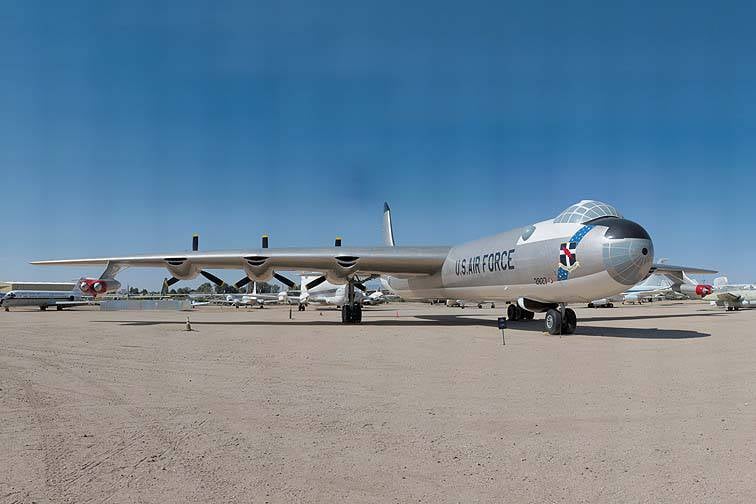
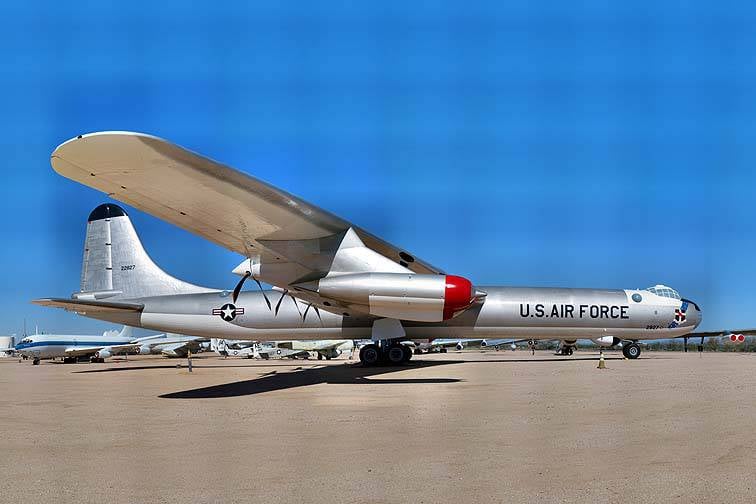
Despite a long five-year development period for piston aircraft, the B-36 entered into service with the US Air Force raw. It is known that the first B-36А entered the combat part of the strategic aviation command (SAC) on the basis of Karswell in June 1948, but the author could not find in print the date of achievement by the first subdivision of full-combat aircraft. Apparently, this process stretched over several years.
Long-term development of the B-36 is associated with almost continuous elimination of deficiencies and refinement of the bombers at the initial stage of their operation. There were problems with the chassis, defensive armament, engine lubrication system, insufficient strength of hermetic partitions revealed, which at one time forced the flight altitude to be limited to 7620 m. Maintenance of bombers required special equipment that was not created in time, etc. As a result, if by the end of 1948, 35 В-36А and В-36В were in the line, then in a year the fleet number reached only 36 machines, i.e. increased by just one car. New difficulties have arisen with the entry into service of options with additional turbofan engines. Frequent stopping and repeated launches in flight led to a rather significant reduction in the service life of the turbojet engine. The overhaul life of each of the auxiliary TRDs J47 in 1950 was only 40 h, whereas on a Boeing B-47 bomber, the same J47 engines used as the main powerplant had a resource in terms of 100 h. Moreover, the reserves for increasing the reliability of J47 were small: it was intended to bring its normal turnaround time to 150 h, and when used as an auxiliary installation, to 55 h. This also affected the operational statistics: by the end of 1950, about 100 bombers had been built, but only 38, of which only a few were combat-ready. The turning point occurred in 1951, by the end of which 98 B-36 entered service, and a year later the fleet of bombers made 154 vehicles. Scouts began to enter service in June 1950.
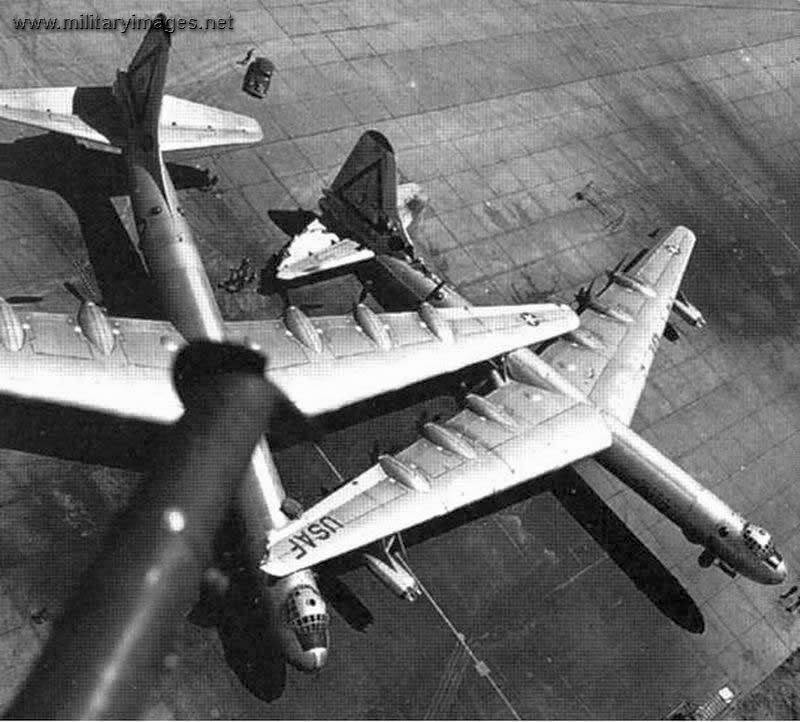
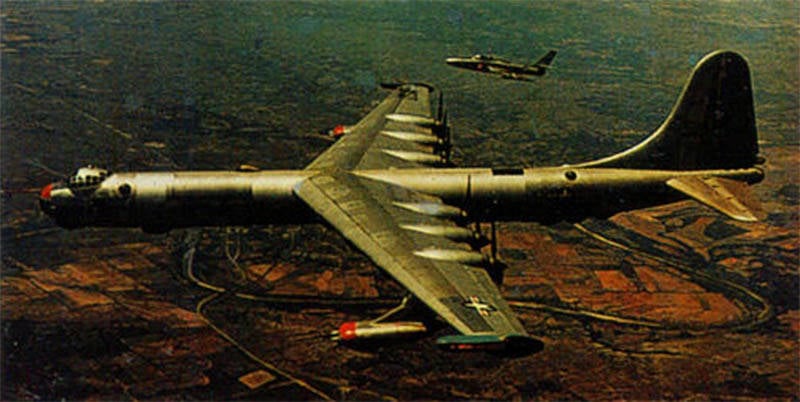
Most likely, the lengthy refinement and operational difficulties can explain the non-participation of B-36 in the Korean war of 1950-1953. As a result, as American aviation enthusiasts often recall with enthusiasm, the B-36 justified its name “Peacemaker” and in the tense years of the Cold War never took off “in anger”.
Despite the difficulties in developing the B-36, the new bombers marked a major step in the development of the US Air Force. To demonstrate their capabilities, the Americans undertook two major flights on B-36. The first of these was performed at the beginning of December 1948 from the Carswell Air Base in Hawaii. The plane overcame 12875 km for 35 30 mines without landing and simulated bombing, dropping training bombs with 4,5 t mass. This, by the way, confused the leadership of the Hawaiian air defense system, since B-36 was not detected on the approach and its “attack” caused the associations with still fresh in the memory of the Americans sudden raid of the Japanese on Pearl Harbor. Three months later (12 March, 1949), a flight was made to a distance of 15450 km. It also passed without intermediate landings and refueling, the aircraft was in the air 43 h 37 m. These flights were widely reported in the American press, but the effect produced by B-36 was somewhat weakened by almost even more distant flights made at the same time multiple refueling in the air) Boeing B-50 bomber.
The largest number of SA / N fleet of B / RB-36 bomber and reconnaissance fleet was reached by the end of 1954. The 342 unit was composed of six bomber (209 B-36) and four reconnaissance (133 RB-36) wing wings. Bombers stationed at Carswell airbases (Texas), Fairchild (Washington), Walker (New Mexico), Biggs (Texas), reconnaissance aircraft - at Fairfield-Suisen airbases (later renamed Travis, etc.). ), Rapid City (renamed Ellsworth, South Dakota), Raimi (Puerto Rico) and Fairchild (Washington).
In August, the 1954 18 of the RB-36 aircraft were deployed at the British Upper Hayford base and may have made a number of reconnaissance flights in the Baltic area near the borders of the Soviet Union. However, this peak year for B-36 also became the year and the beginning of its sunset. At first it affected the RB-36 scouts. In June, the NAC 1954, having decided to limit itself to the more rapid, albeit less long-range jet reconnaissance aircraft Boeing RB-47, which began to enter service, reoriented the RB-36 aircraft, mainly to carry out bombing tasks, retaining, however, limited reconnaissance aircraft opportunities. And two years later, it came to the B-36 bombers, which also replaced the fully reactive B-52. In 1956, three aircraft wings of B-36 aircraft (the remainder was 247 aircraft) were removed from service, in 1957, three more (the rest of 127 aircraft), in 1958, two, and in February 1959 with B-36 farewell last wing. By the beginning of the 1990s, four bomber remained in US museums.
- Ilyin V.E., Levin M.A.
- Convair B-36 long-range US strategic bomber (part of 1)
Convair B-36 long-range US strategic bomber (part of 2)
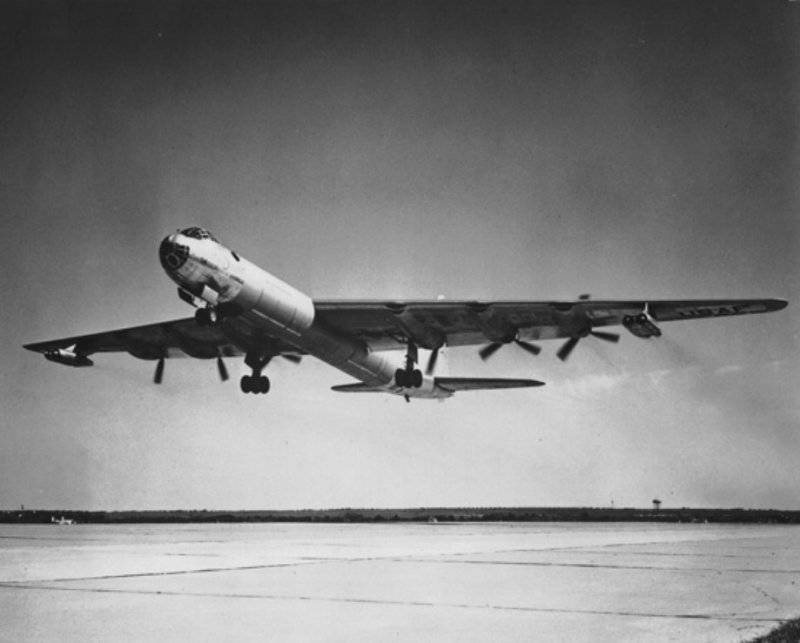
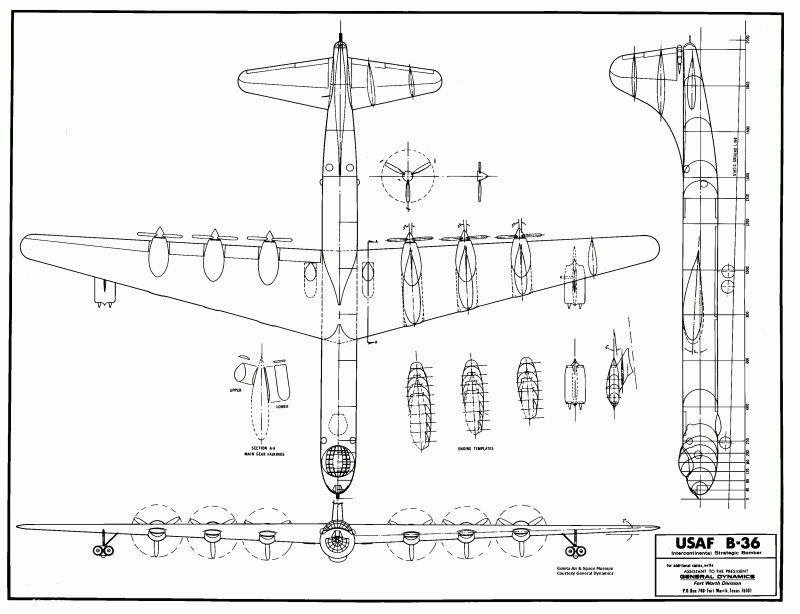
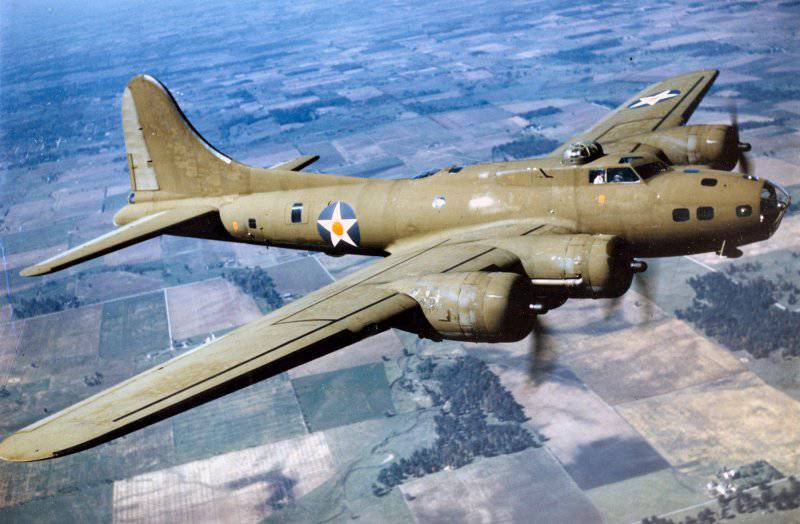
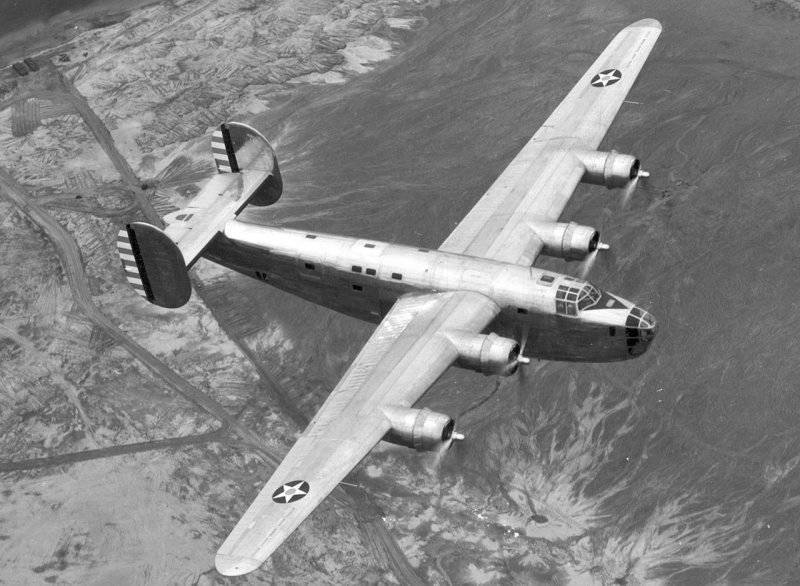
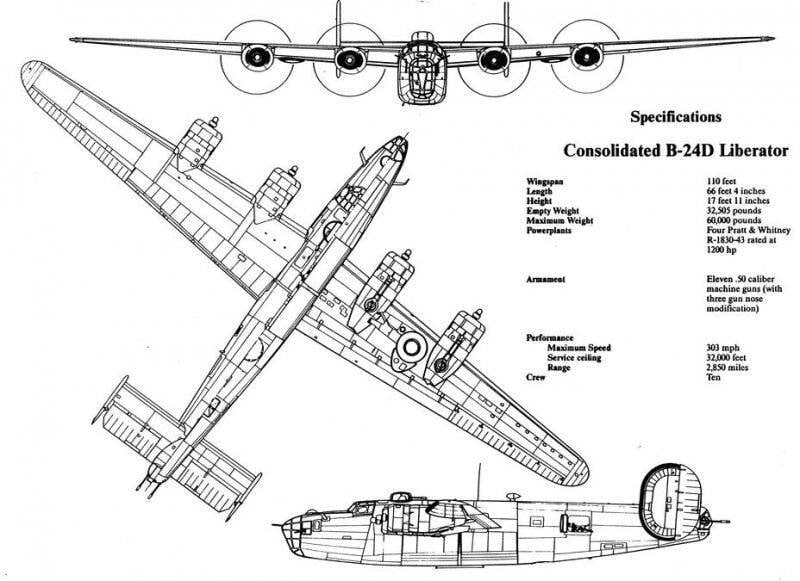
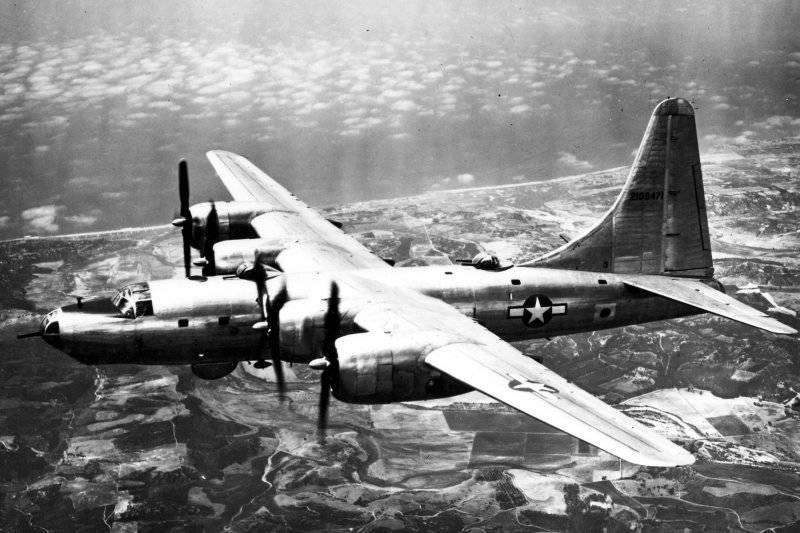
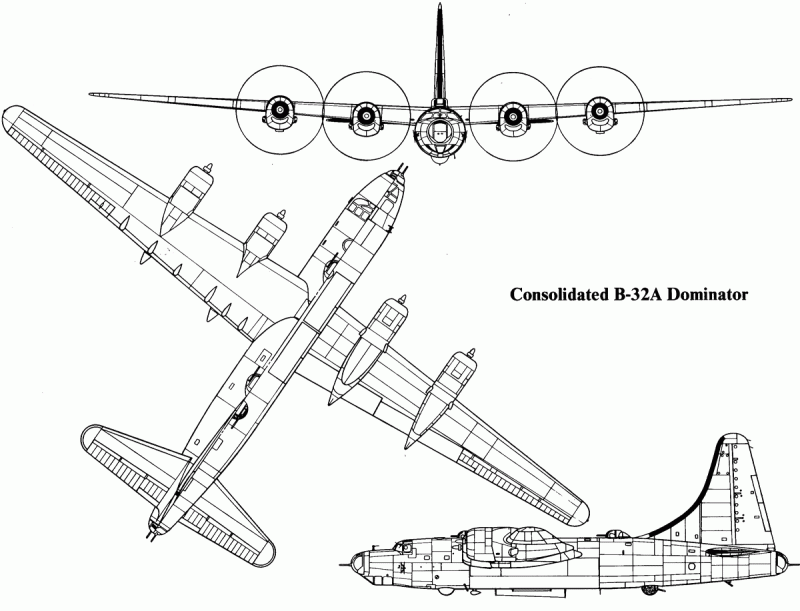
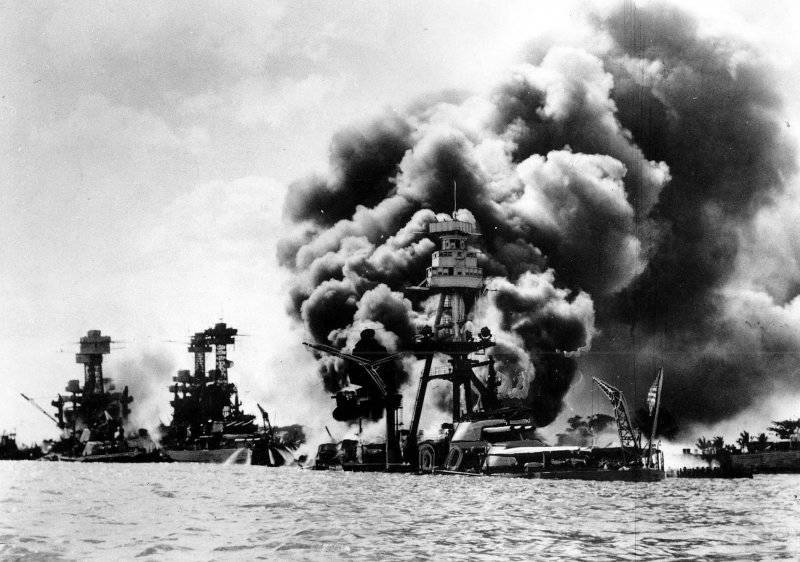
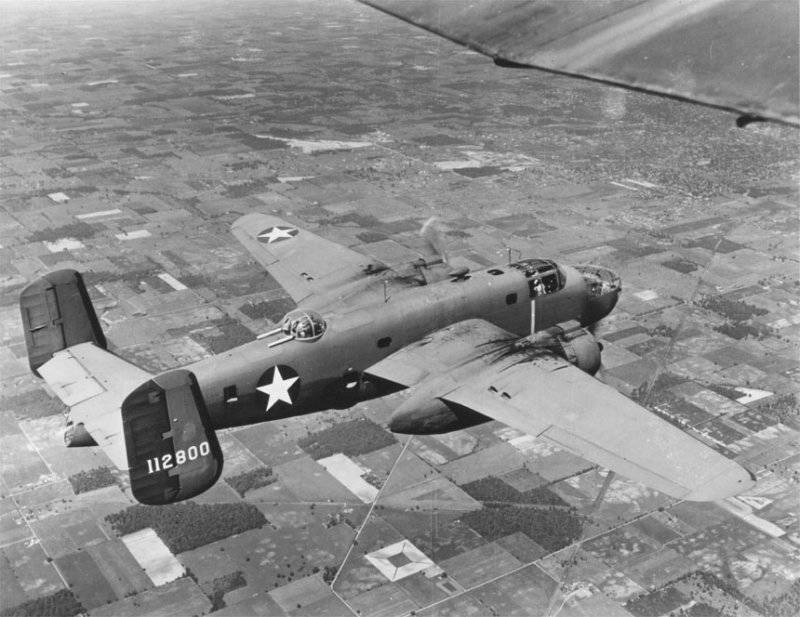
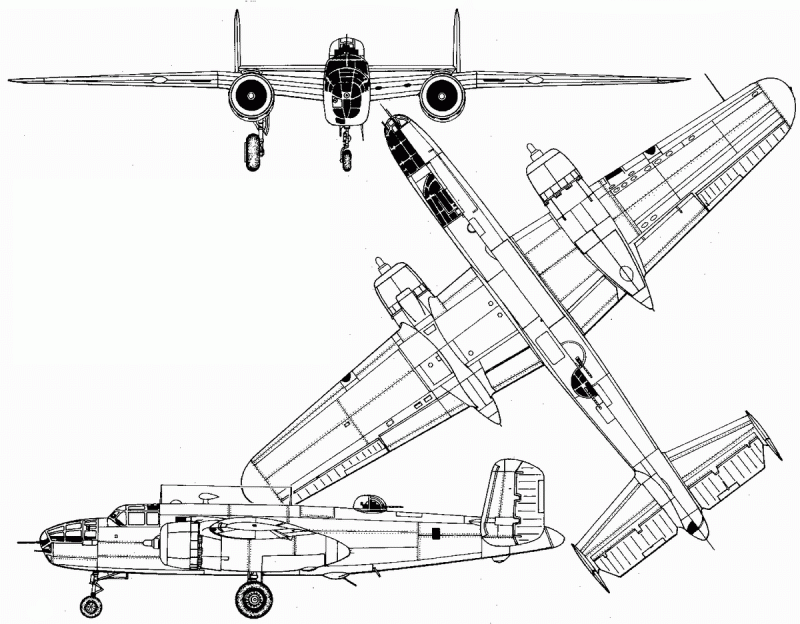
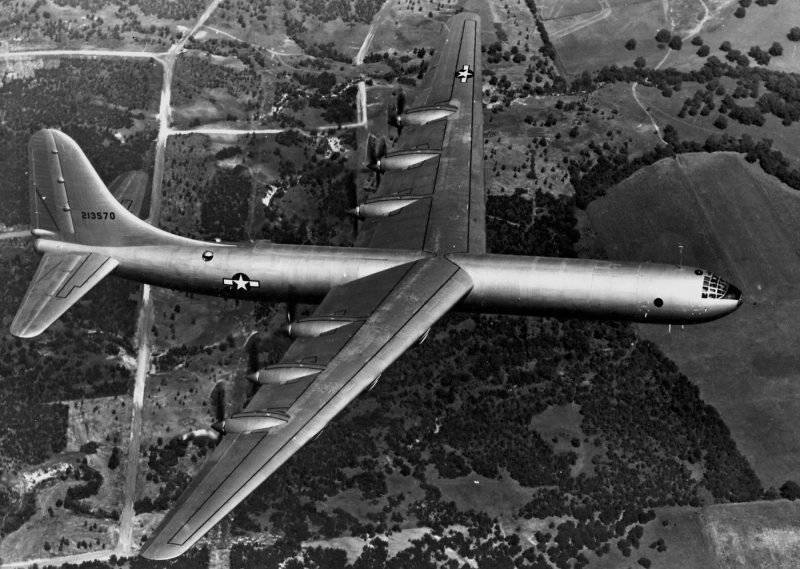
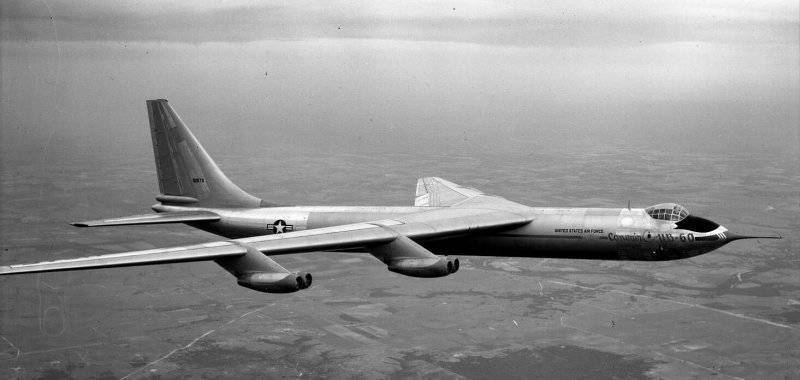
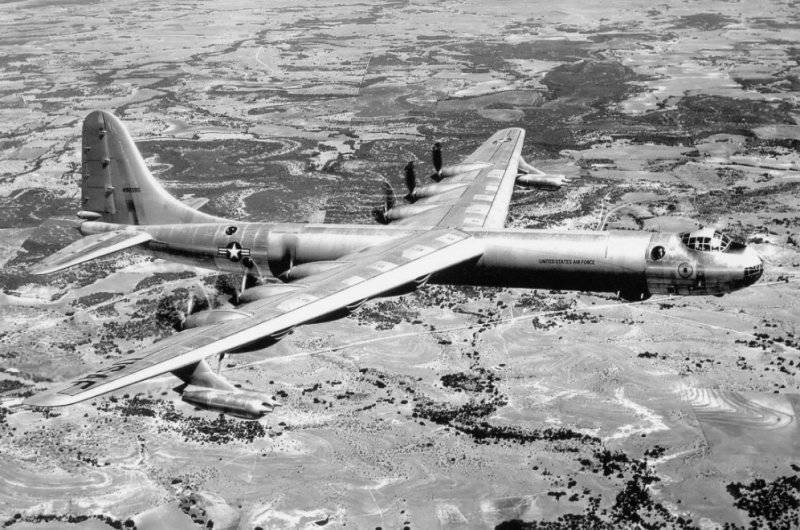
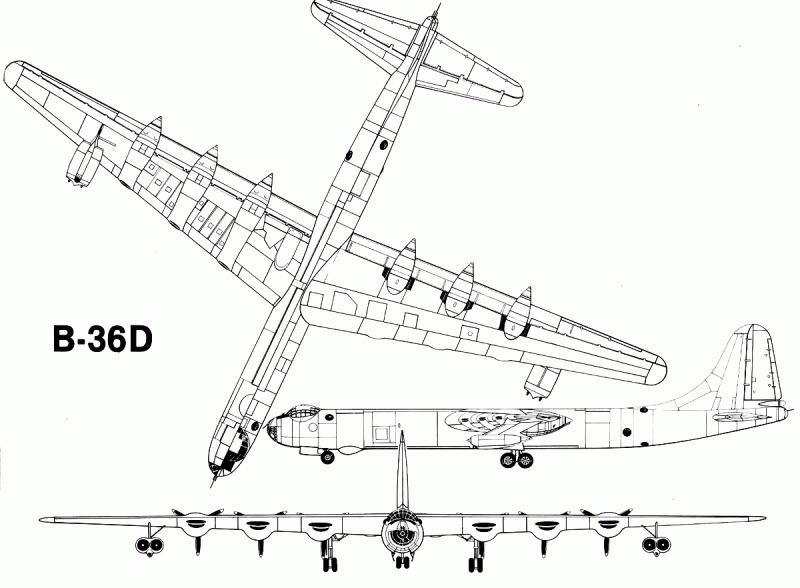
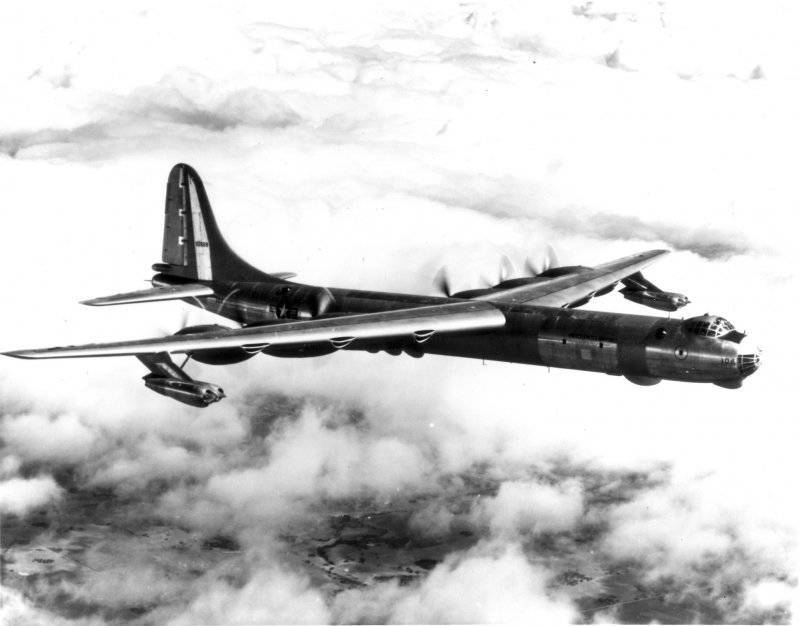
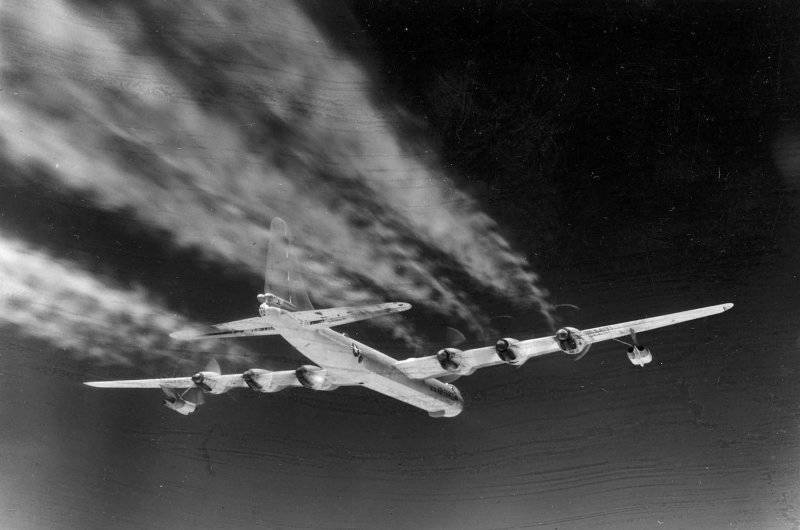
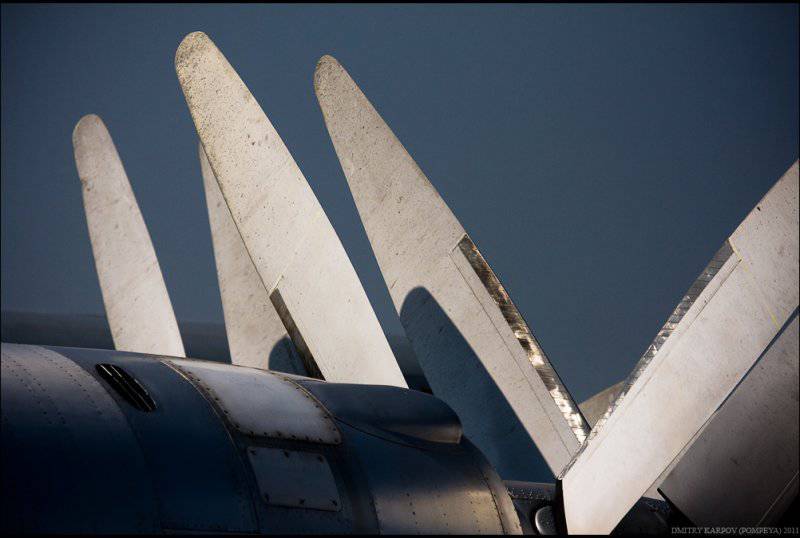
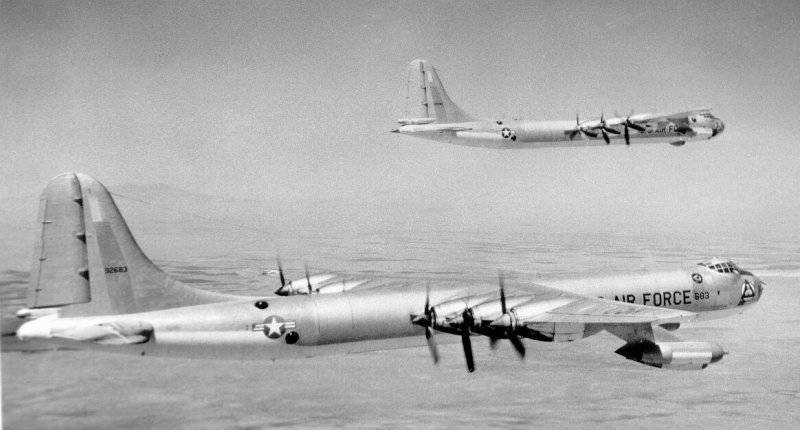
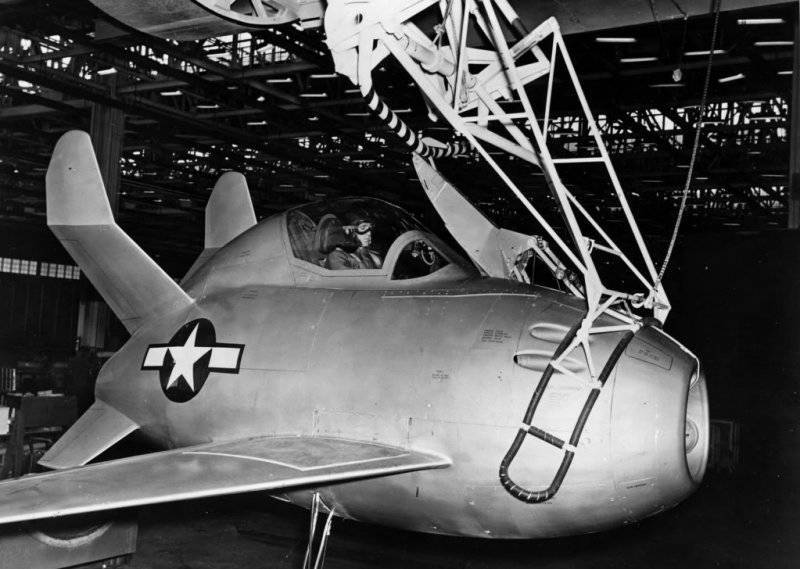
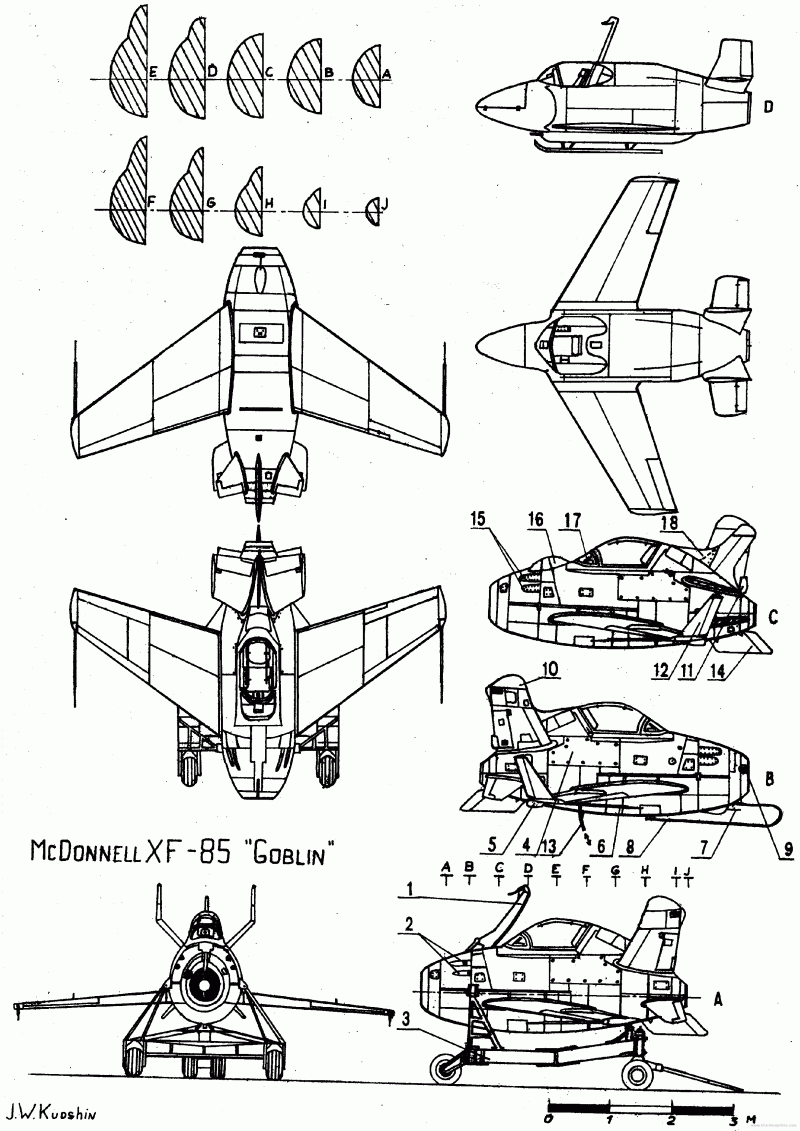
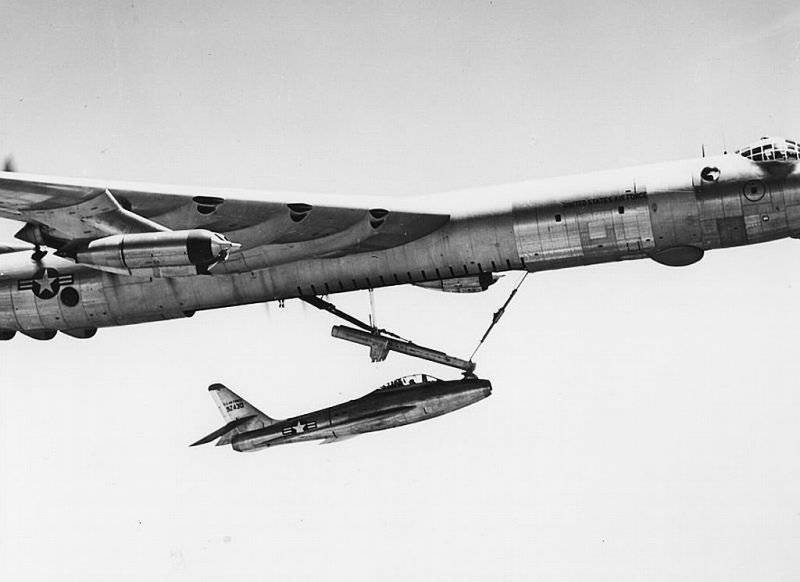
Information